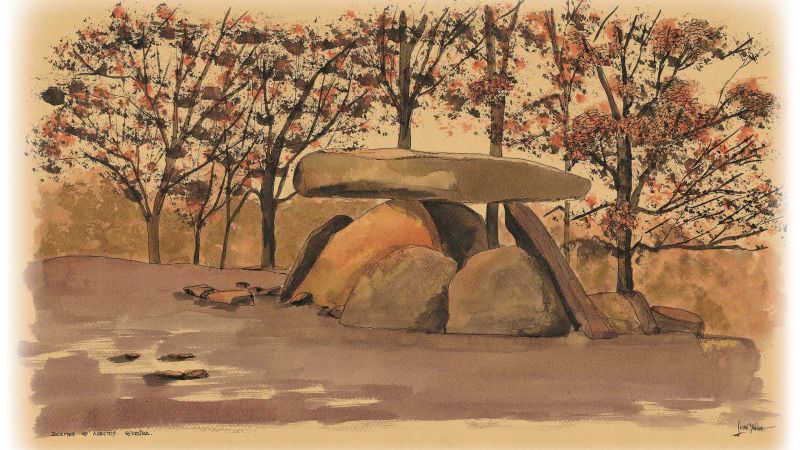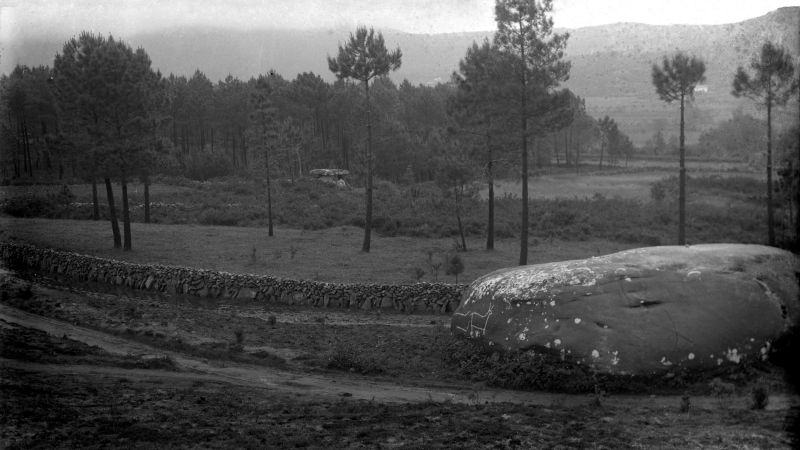Pedra do Mouro (Dolmen of Axeitos)
Megalithic monuments such as this were constructed between the 4th and 3rd millennium BC and served as burial sites for the communities that inhabited Galicia at the time.
Over these six millennia, the different communities that lived in these lands of Axeitos respected this dolmen and, thanks to that, it has reached our times in good condition. Furthermore, tradition gave it a special symbolic meaning and a name of its own: Pedra do Mouro (Stone of the Mouro).Mouros are ubiquitous mythological creatures, credited with the construction of everything that traditional communities have no recollection of, such as this anta with a complex morphology. Nevertheless, according to tradition, mouros are beings from the present that today continue to live in their underground world, forbidden to humans and full of treasures.
Today, as heirs of this ancient legacy and proud of the respect shown by our ancestors for these monuments, it’s the duty of us all to guarantee their conservation so future generations can enjoy and study them.


- (Dolmen of Axeitos) Illustration of the Dolmen of Axeitos (José M. Yáñez Rodríguez)
- Pedra das Cabras (Stone of the Goats), located in the vicinity of the dolmen and now in ruins. 1927. (Collection: Ramón Sobrino Buhígas. Archive: Núñez Sobrino. Photo library: Colectivo A Rula).







